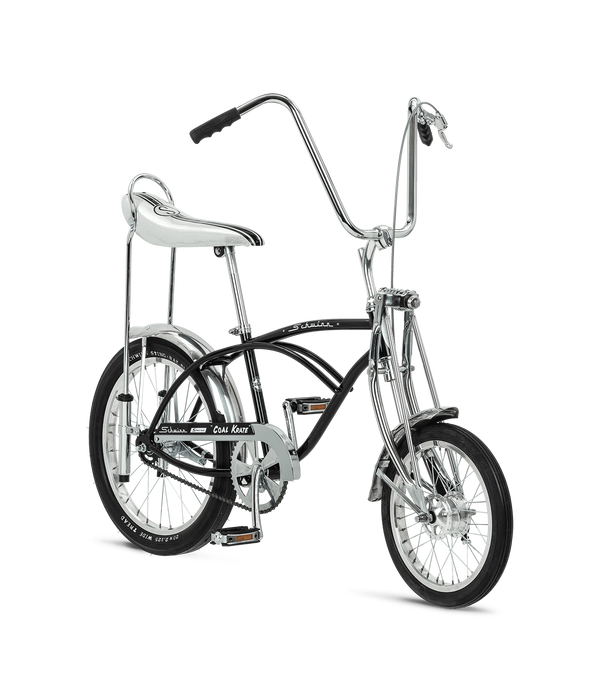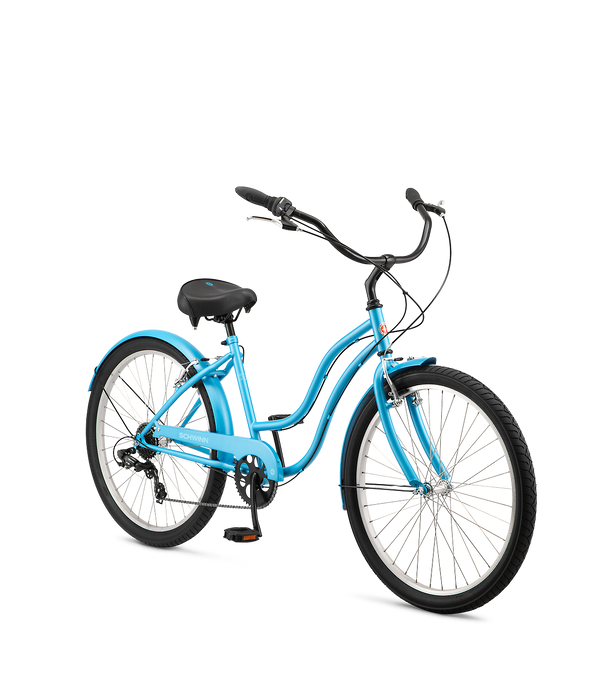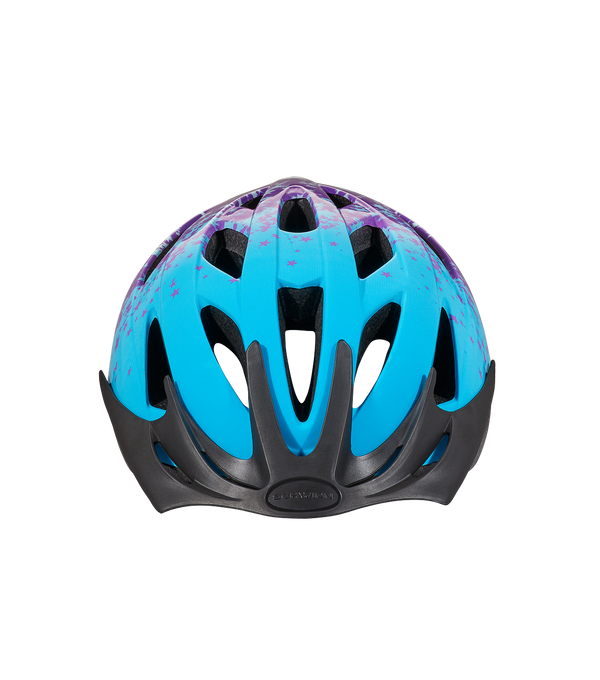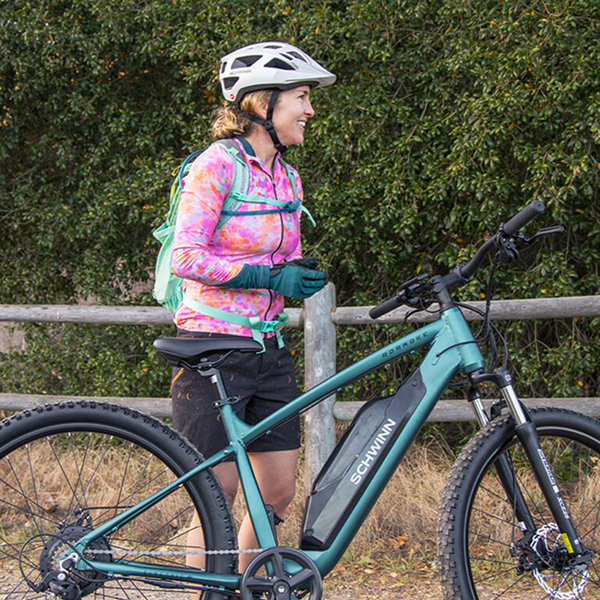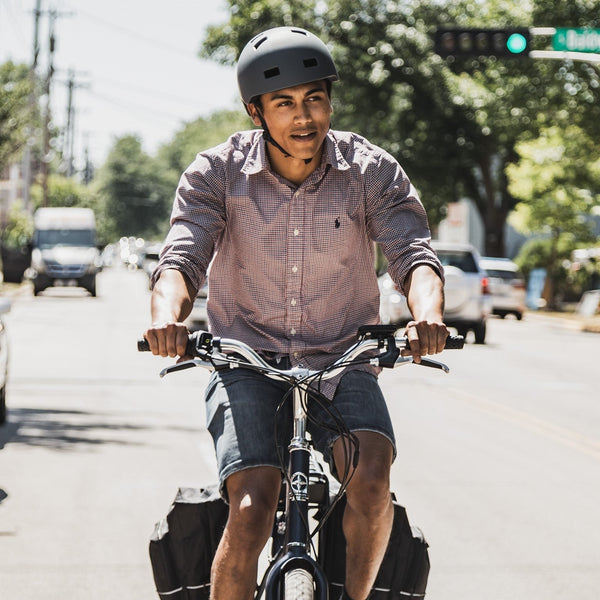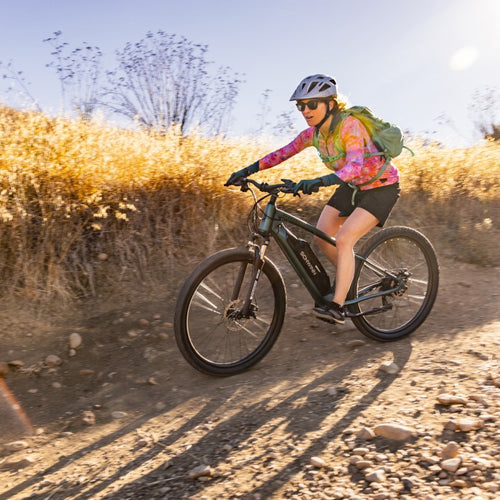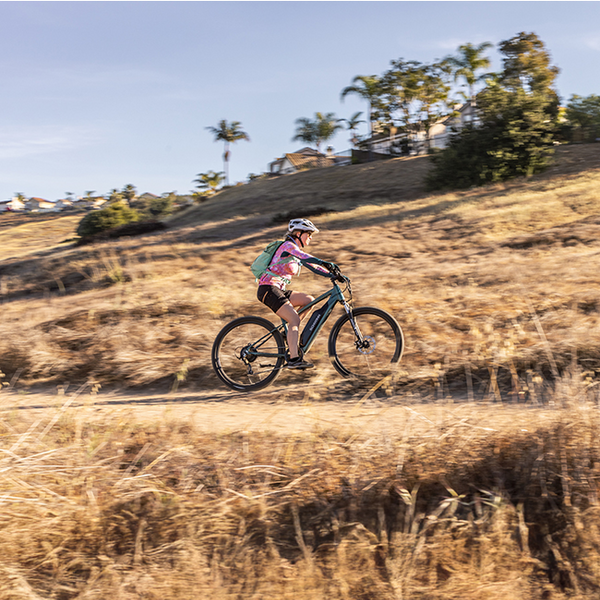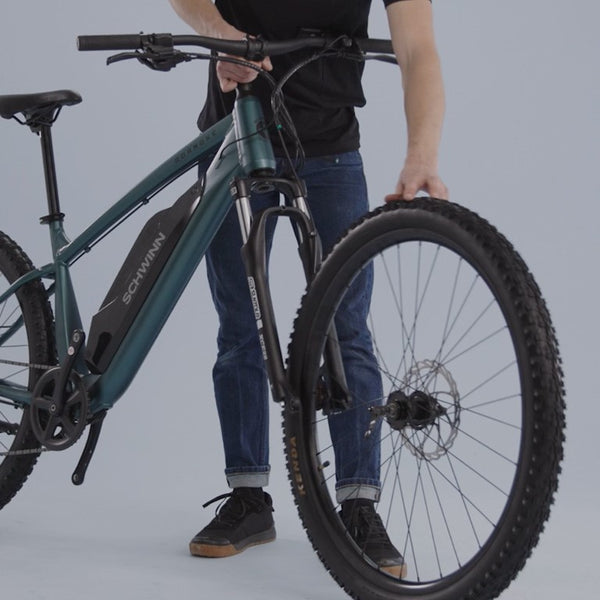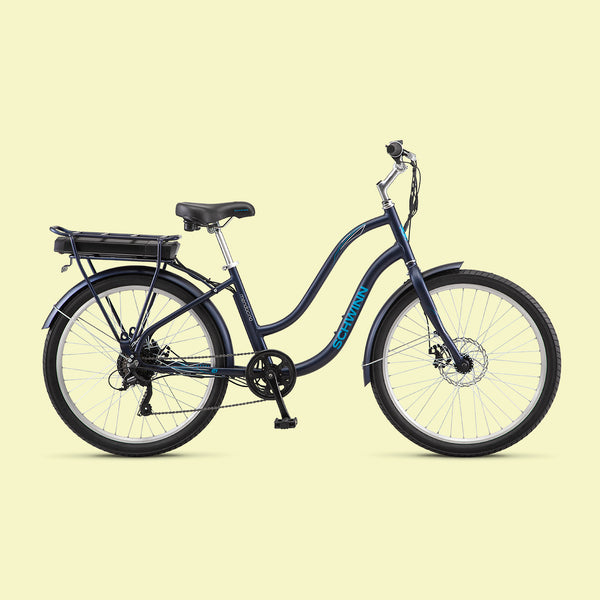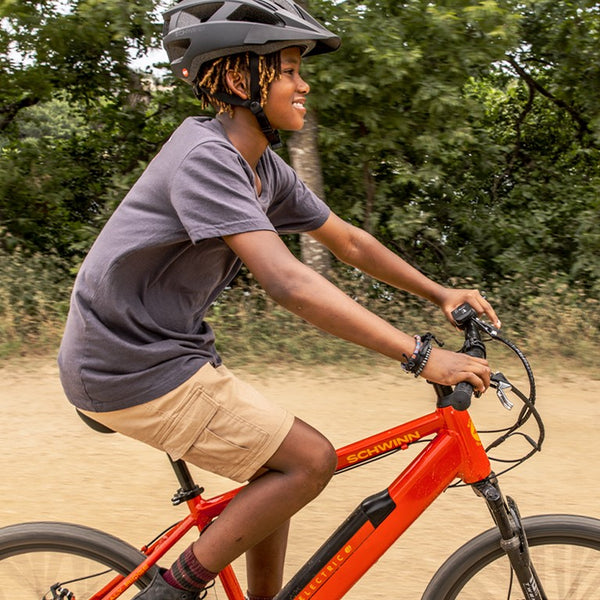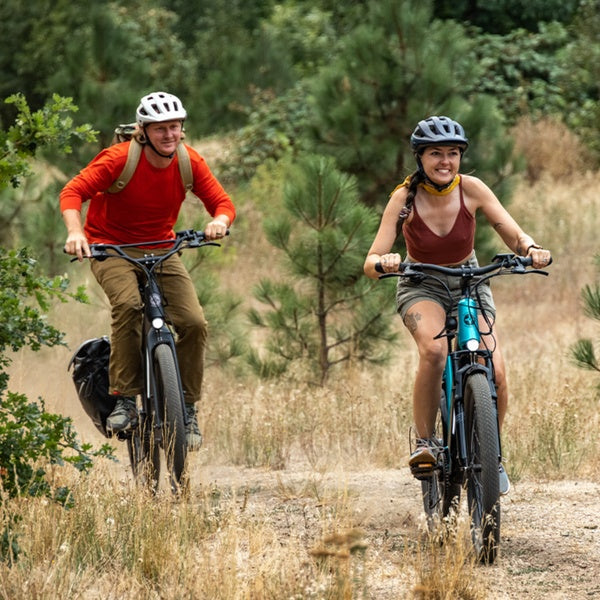The moment a first-time e-bike rider climbs on a fully charged bike, there's this jolt of wonder that runs through their mind: "Just what happens if I push the throttle all the way? How fast can I get this baby to go?"
Our advice: If you're in a safe place to do it, go right ahead. Put on your helmet and let it rip.
The motors on most of Schwinn's e-bikes are designed to hit top speeds of 20 miles an hour without any pedal assistance from the rider. That's because they're classified as "Class 2 e-bikes," which are limited to a top speed of 20 miles an hour. If you can pedal faster than that, by all means, go ahead, but the motor on a Class 2 e-bike is going to get you to 20 mph.
How Fast Are We Talking?
Just for comparison's sake, the top riders in the Tour de France average an overall speed of 25 mph through more than 2,000 miles of grueling hill climbs, breathtaking downhill descents, time trials, and flat racing. That's without any electrical assist. So even if you hopped on something like our Coston DX, kept it fully charged, and used the throttle the whole time to race against the elite Tour athletes, you'll still be well off the pack. And disqualified since e-bikes aren't allowed in the Tour de France.
But for getting around town, going on a social ride with friends, or running errands, a Class 2 e-bike and its 20 mph limit will be everything you need.

Class 1
It's important to remember that not all e-bikes are created equal. Some e-bikes are classified as "Class 1" bikes where the electric motor only provides assistance to the rider when they pedal. The pedal assist will work up to 20 mph. Everything after that comes from the power in the rider's legs.
These bikes are allowed wherever bikes are permitted.
Class 2
Class 2 e-bikes (the majority of e-bikes on the market today) have a throttle that can propel the bike to that top 20 mph speed without any pedal assist from the rider. The bike can accelerate to 20 mph without the rider having to pedal. And like Class 1, these bikes are allowed wherever bikes are permitted.
We should add that not all Class 2 e-bikes will get you all the way to 20 mph. Take, for instance, our smaller Healy Ridge mountain bike. Designed for younger riders and with safety incorporated as a top concern, it purposefully has a top speed of 16 mph.
But for the most part, 20 mph is the top speed on a Class 2 e-bike. And why is 20 mph the industry standard for Class 2 e-bikes? Because that's where the federal government put it a number of years ago.
Class 3
Class 3 e-bikes are also known as "speed pedal-assisted electric bikes," where the motor provides assistance only when the rider is pedaling, ceases to assist when the bike hits a speed of 28 mph, and is equipped with a speedometer.
Because of their higher power and capability to hit higher speeds, Class 3 e-bikes are often restricted from trails and bike paths.
As the e-bike industry grows and technological advances continue, it seems likely that additional e-bike classes will be created. For now, however, Class 3 e-bikes hit the highest regulated speed.
Beyond the Classes
You might see the occasional "e-bike" (and we use the term loosely here) blowing through city traffic at speeds of 30 or 40 mph or more. These are essentially small electric motorcycles with pedals merely as decoration. They're not really e-bikes, and they might not be legal in most places.
You might also find some high-power e-bikes that allow for a manual override of the regulator. These e-bikes can reportedly reach top speeds of 60 mph. Again, they're not legal in most public places.
Speed and Range
Fully charged, a 250-watt e-bike motor can take a rider about 22.5 miles at 20 mph. At lower speeds, a battery will last up to 45 miles. These numbers, of course, can vary depending on riding conditions, bike weight, and rider weight. While we offer higher-capacity batteries for our e-bikes, the larger batteries won't make the bike go faster. They extend range, not speed. Only the rider can do that!
So, there you have it. Again, most e-bikes out there are Class 2 and only assist up to 20 mph. Just make sure to check the specifications of the e-bike you want to ride and the regulations in your area. Once you have that, you’re ready for all the e-bike adventures you please. Just don’t forget your helmet.
